Once you have taken the first step of creating a strategic, meaningful Brand Identity and Logo Design the next step is to translate these brand assets across to the various other brand touch points you may have. Often for smaller businesses a company brochure is the next logical piece of marketing material that is required to pitch to prospective clients, closely followed by a web site and a suite of livery.
You might have fantastic content for your brochure but how do you put together a really impactful piece from a design perspective. These top 5 tips will help provide a checklist and get you started.
1. Limit Your Fonts
Just like your colour palette you need to choose your fonts carefully. Limit them to a family or set and carefully chose the variations in font based on the mood or emotion they can convey and how they work for your intended audience. I would recommend that 2-3 fonts should be the maximum amount used in a design layout to avoid over complicating the layout. Try to choose fonts that complement each other and your communication to make for a logical and effective design. Ultimately a good font choice will help and assist with establishing hierarchy on how information is communicated and read.
2. Pictures Tell a Thousand Words
Good photography is one of the most powerful tools a designer can use, not only will great photography ensure your brochure is a pleasure to flick through, its also a powerful means of getting your message across. Never try to cost save by using your own poor quality happy snaps, you may not have the budget to invest in a full photo shoot but there are some great stock libraries as image resources that will ensure your brochure looks sharp and professional
3. Stick to a Usable Grid
Developing some basic grid skills is probably one of the most important steps you should take when producing brochure design. A well-implemented grid can transform your design from something average to something clean, clear and effective. These grid structures come in many shapes and sizes and you can build them to be flexible, adaptable and to suit your design. Grids will help you align elements on the page in relation to each other which often produces a neater more logical brochure design.
The fewer columns your grid has, the more uniform your design will be. You won’t have as much flexibility as you would with a grid with a few more columns. It is always a good idea to test few different grids and find what works for you and your brochure.
3. Take Stock of Your Paper Stock
Often stocks can make the difference between an ordinary stock standard brochure and something truly special and outstanding. Stocks can totally change the creative tone of a brochure and can range from high gloss to uncoated recycled with a thousand different texture variations to choose from. I would always advise to start thinking about stock choices before the design layout process begins, the feeling and tone of your brochure can be totally transformed depending on this crucial choice.
5. Think Pull Out Statements for Effect
Pull Out quotes and statements are a great way to make your message really stand out. It also adds an interesting hierarchy to your typography and font choices. Sometimes the simple ideas are the best and typography is always going to be a far better option over using poor quality or cliché images. Typographical pull out quotes are a bold and simple way to grab attention, communicate your most important messages and add visual interest.
I hope the above has given you some food for thought when designing your next brochure. If you enjoyed above
Related Tag: Brochure Design Sydney
